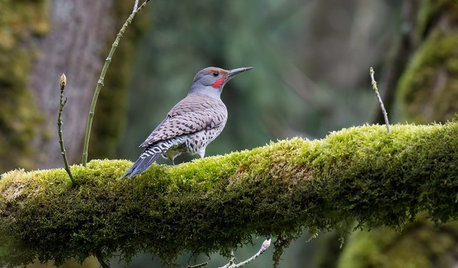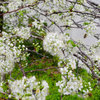Which came first? The ants or the Plague?
shear_stupidity
10 years ago
Related Stories

KITCHEN DESIGNHouzz Quiz: Which Kitchen Backsplash Material Is Right for You?
With so many options available, see if we can help you narrow down the selection
Full Story
KITCHEN OF THE WEEKKitchen of the Week: Seeking Balance in Virginia
Poor flow and layout issues plagued this kitchen for a family, until an award-winning design came to the rescue
Full Story
HOUZZ TOURSMy Houzz: From Dated to Dreamy in 3 Weeks
The results belie the speedy makeover of this 1940s Quebec home — which not even a colony of ants could derail
Full Story
ADDITIONSHouzz Tour: A Do-Over Addition Brings in Light, Air and Views
Double-height glass solves a host of the problems that plagued the previous add-on in this Washington, D.C., bungalow
Full Story
SHOWERSTurn Your Shower Niche Into a Design Star
Clear glass surrounds have raised the design bar for details such as shampoo and soap shelves. Here are 4 standouts
Full Story
GARDENING GUIDESBackyard Birds: Healthy Home Habitats for Northern Flickers
These colorful woodpeckers found across the U.S. and Canada love berries, seeds and ants and often nest in deep burrows in trees
Full Story
HOUSEKEEPINGWhat's That Sound? 9 Home Noises and How to Fix Them
Bumps and thumps might be driving you crazy, but they also might mean big trouble. We give you the lowdown and which pro to call for help
Full Story
BATHROOM DESIGNHow to Choose Tile for a Steam Shower
In steamy quarters, tile needs to stand up to all that water and vapor in style. Here's how to get it right the first time
Full Story
KITCHEN OF THE WEEKKitchen of the Week: A Balance of Modern and Country for a Family Home
A kitchen remodel expands to become a first-floor renovation — improving views, flow, storage and function
Full Story
COLORWhy My Son’s Room Will Be Red: An Expert Weighs In on Colors for Baby
Historical facts, trend recaps and enthusiastic support for painting your nursery any darn color you like
Full Story








amberroses
carolb_w_fl_coastal_9b
Related Professionals
Simi Valley Landscape Architects & Landscape Designers · Canby Landscape Contractors · El Segundo Landscape Contractors · Gresham Landscape Contractors · Rockland Landscape Contractors · Rosemount Landscape Contractors · Santa Ana Landscape Contractors · St. Louis Landscape Contractors · Midlothian Decks, Patios & Outdoor Enclosures · Tooele Decks, Patios & Outdoor Enclosures · Leesburg Siding & Exteriors · Paterson Siding & Exteriors · Point Loma San Diego Siding & Exteriors · Ramona Siding & Exteriors · South Plainfield Siding & Exteriorsshear_stupidityOriginal Author
shear_stupidityOriginal Author
stuartwanda
Crenda 10A SW FL
SusieQsie_Fla
shear_stupidityOriginal Author
stuartwanda
shavedmonkey (Harvey in South Fl.)Z10b
shear_stupidityOriginal Author
abnorm
SusieQsie_Fla